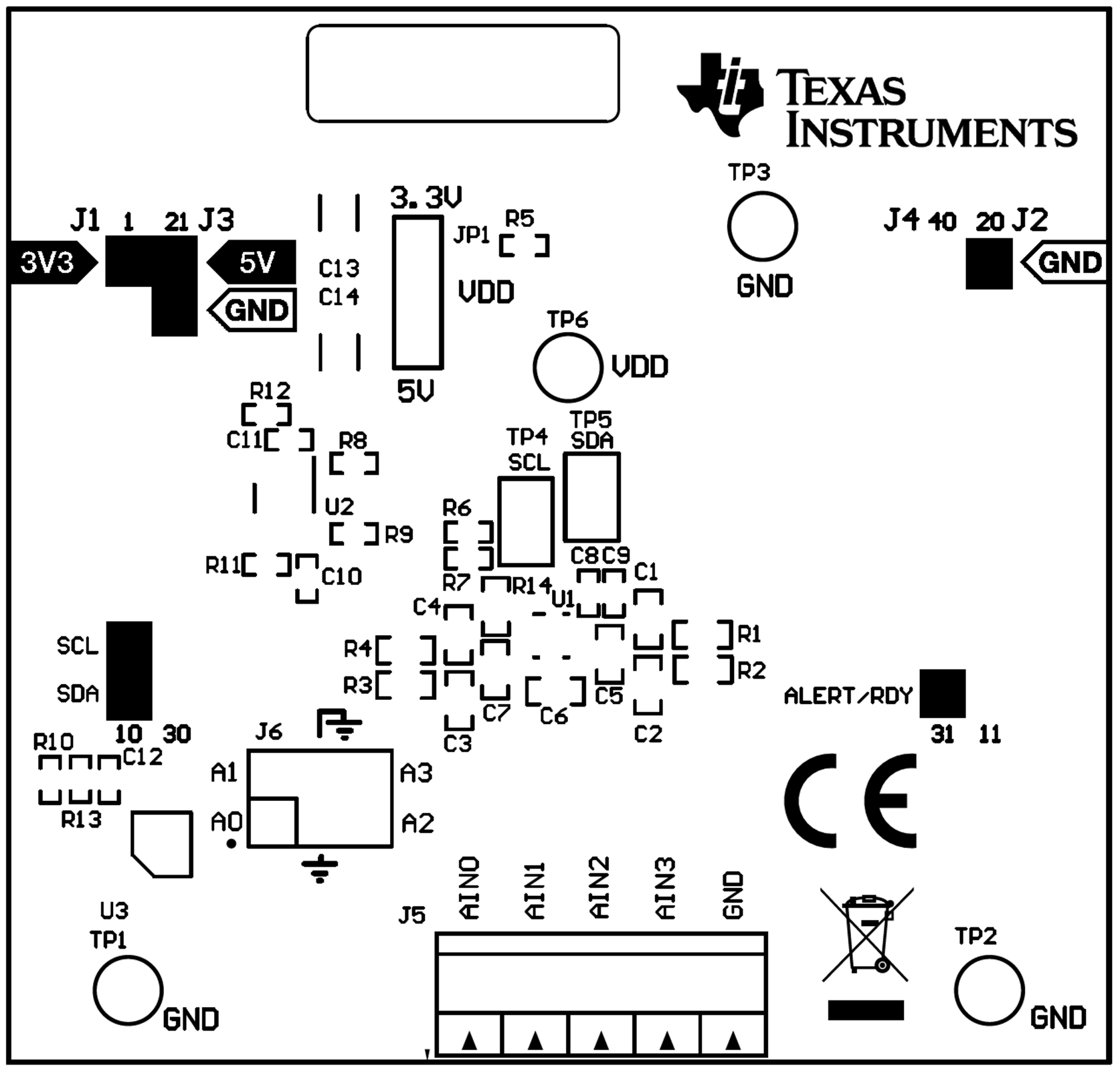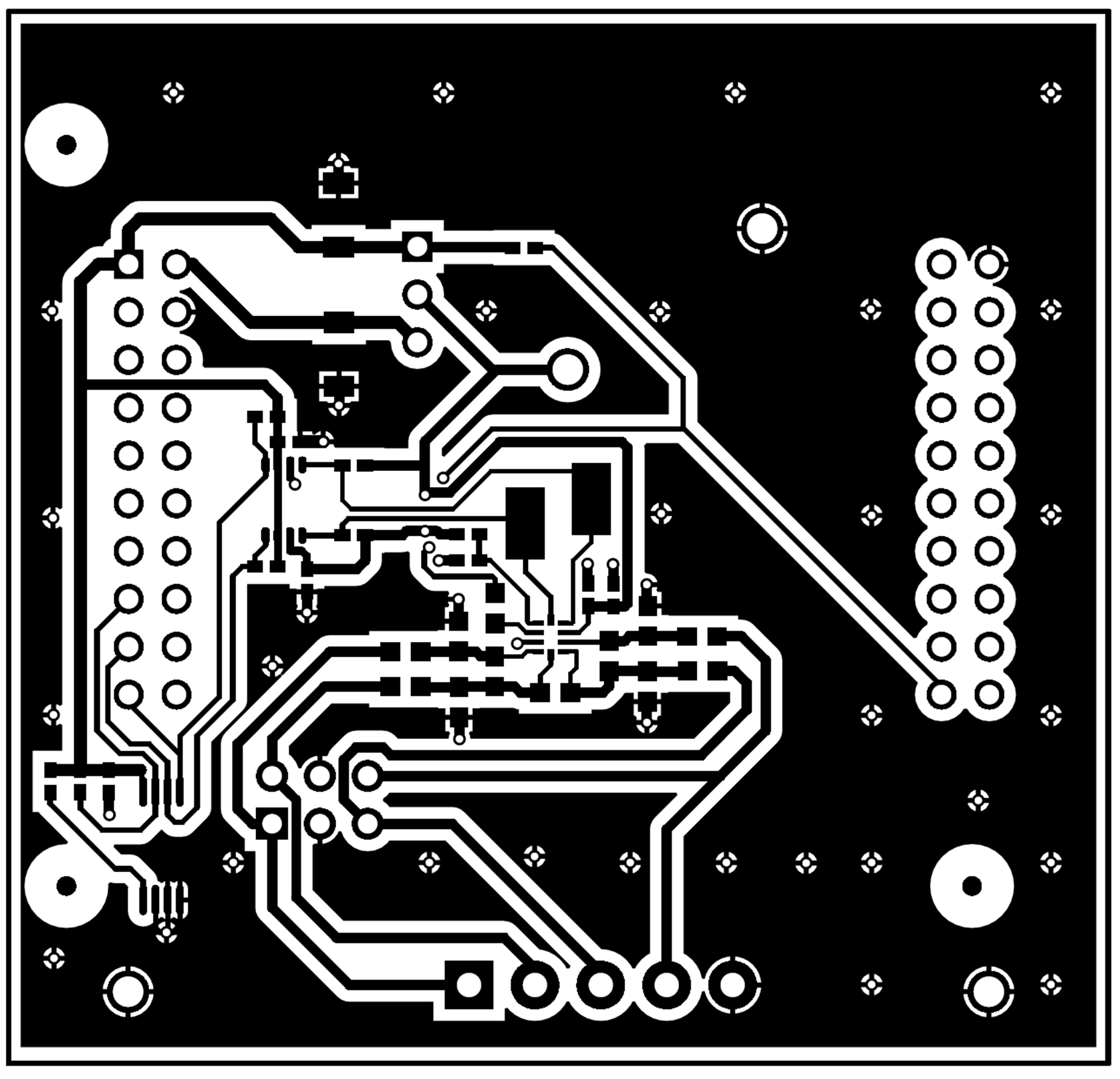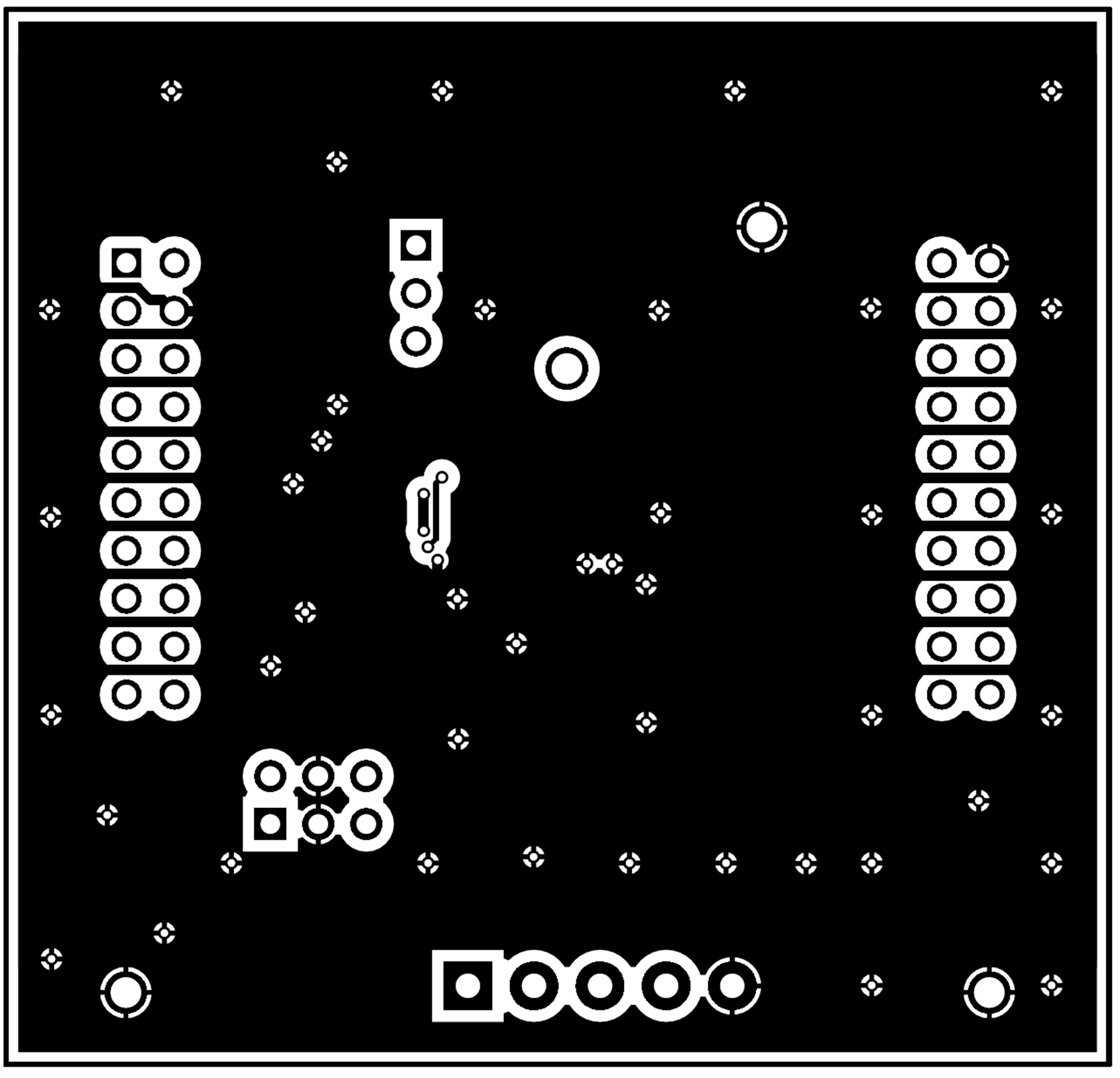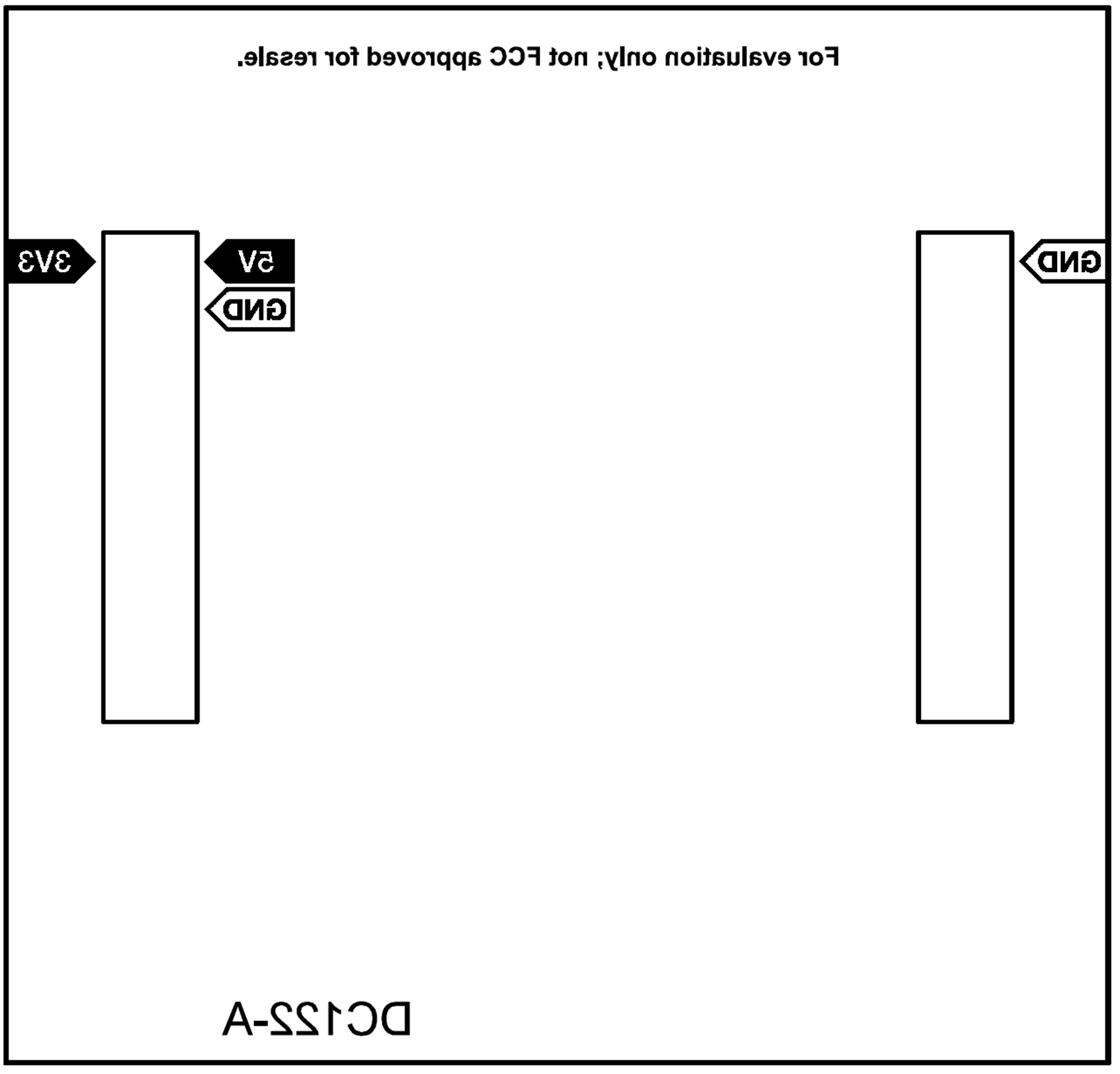SBAU362 March 2021
6.2 Printed Circuit Board Layout
Figure 6-1 to Figure 6-4 depict the ADS1x15EVM PCB layout.
 Figure 6-1 Top Silkscreen
Figure 6-1 Top Silkscreen Figure 6-2 Top Layer
Figure 6-2 Top Layer Figure 6-3 Bottom Layer
Figure 6-3 Bottom Layer Figure 6-4 Bottom Silkscreen
Figure 6-4 Bottom SilkscreenSBAU362 March 2021
Figure 6-1 to Figure 6-4 depict the ADS1x15EVM PCB layout.
 Figure 6-1 Top Silkscreen
Figure 6-1 Top Silkscreen Figure 6-2 Top Layer
Figure 6-2 Top Layer Figure 6-3 Bottom Layer
Figure 6-3 Bottom Layer Figure 6-4 Bottom Silkscreen
Figure 6-4 Bottom Silkscreen